The Rimfire Report: NRL22 - The Poor Man's Precision Shooting Sport

Hello and welcome back to another edition of The Rimfire Report! We’ve been talking a lot about firearms and trends from the past lately and today I thought it might be fun to talk about something a bit more modern and a bit more fun in my opinion - precision rimfire competitions. The National Rimfire League or NRL22 is one of the fastest-growing competitions out there. I recently had a chance to chat with a few friends who’ve been competing in NRL22, and after listening to their stories, I thought it might be good to condense and break down some of that info with you here in the hopes that some of you might take up the sport yourself. Whether you’re looking to take the leap from casual backyard plinking or just want a fresh challenge that won’t blow through your wallet, NRL22 might be exactly what you’re looking for.
More Rimfire Report @ TFB:
The Rimfire Report: NRL22 - The Poor Man's Precision Shooting Sport
NRL22 is basically a scaled-down version of the precision rifle competitions you might’ve seen on the centerfire side of things. This is the main reason I call it “Poor Man’s PRS” out of love. Inexpensive .22 LR ammunition is the focus of this sport, which is way more budget-friendly and offers a lower barrier to entry for most people which would include myself. But don’t let the rather anemic and unreliable nature of .22LR fool you: once you’re in the match environment—barricades, timed stages, teeny-tiny targets are all you’re going to be thinking about and everything comes down to how well you put your rifle together, how consistent your ammo is, and how good of a shooter you are.
Part of this rimfire sports success is that monthly course-of-fire packets come straight from the NRL22 organization, which means local clubs across the country can replicate the exact same stages provided they have the equipment and the space to do so. So, not only do you get to compete in your backyard, but your scores can also be compared nationally rather than just on a local level.
If you’ve ever looked at the price tags on some of those centerfire PRS rifles, you probably felt a little lightheaded at the thought of spending nearly $2,000 just on the rifle itself. My friends who shoot Centerfire PRS regularly lament that ammo alone can drain your wallet at an alarming rate. I have dabbled in Centerfire PRS and can tell you from experience that factory ammo is on average about $1.50 per round. But in NRL22, .22 LR ammo is significantly cheaper, and more readily available even in its match ammo variants. A box of good match-grade rimfire ammo will cost you a fraction of what you’d pay for high-end centerfire cartridges. That means you can shoot more matches, train more often, and still keep gas in your tank for that weekend range trip with your other guns. So what does a typical NRL22 match look like?
Divisions and Gear
Most of the local matches I’ve heard about separate shooters by skill level equipment budgets and sometimes age. This also seems to be the case with some of the larger regional and national matches. It’s worth noting that each division has a budget cap - not a budget minimum, so if you’re bold enough to come to your first match with equipment that doesn’t meet the maximum of the division you’re participating in, that’s okay. Match fees can vary greatly between clubs but typical pricing usually lands between $15 and $45 in most cases. Once again this is much less expensive than centerfire rifle matches which typically start at around $50 or more.
Base Division
Base-Class or Base Division gives shooters a cap on their total rifle-and-optic tight at a combined MSRP of $1300 (MRSP is a huge deal here). If you’re new or just don’t want to invest heavily yet, Base Class has your name on it, although I bet based on that price tag just now most of you probably still won’t think NRL22 is a “poor man’s sport.” Once again, that’s a limit, not even a recommendation.
Common rifles found in the base division include the Ruger Precision Rimfire, some variants of the CZ 457, and even the much underrated Savage Mark II rifle. Any of these three options are more than adequate for the task of NRL22 and they also leave a ton of room in the budget for better optics, and even a bipod, sling, or shooting bag.
My own Rimfire PRS rifle would fall into the Base Division being comprised of a relatively inexpensive Ruger Precision Rimfire, Vortex Venom, and inexpensive Caldwell Bipod. So if you have a 22LR rifle that you know you can be fast and accurate with at slightly longer ranges, you’re probably good to go for the base division. Even 22LR semi-autos are allowed even though they are not very common.
Open Division
The sky’s the limit here. If you’ve got a custom .22 rifle with a premium scope and you’re chasing absolute precision, Open Class is where you’ll find your competition.
While I can’t tell you exactly which rifle or optic to buy, my friends suggested focusing on a decent, entry-level bolt action or semi-auto .22 with an optic with adjustable parallax down to at least 25 yards. Good triggers and quality barrels matter, too, but the real magic comes from practice familiarizing yourself with your gear, and knowing how to deal with failures to fire and other common rimfire-related malfunctions. I have seen more than my fair share of higher-end bolt-action rimfires choke during matches so even good equipment won’t ensure a completely smooth match.
You’ll see a lot of higher-end complete rifles like ones from Vudoo Gun Works, Bergara, and even some of CZ’s higher-end 457 models like the MTR (Match Target Rifle). You’ll also see a lot of custom guns in this class that are often decked out with chassis, aftermarket actions, and high-end barrels and internal components. Although open division often brings out the sport's top competitors, you’ll find that there are a lot of more casual “hobbyist level” shooters just to enjoy shooting a build they’ve made too.
Typical Match Breakdown
A typical NRL22 match includes five standardized stages that are given out freely on the internet every month. All five stages are typically pre-posted the week prior to the new month and all NRL22 matches across the nation will shoot the same 5 stages which will never exceed 200 yards. Each stage usually gives you a specific time limit—often around 90 seconds or so—to engage multiple steel targets at distances from about 25 to 100 yards (some clubs even stretch out to 200 yards if they have the space). Targets can be anything from small plates to unique silhouettes. You’ll also see different props like barrels, tank traps, ladders, cattle gates, or even specialized barricades designed to test positional shooting skills.
My buddies say the key to success is first prioritizing your accuracy, and then focusing on cleaning up your speed through the stage later. As opposed to bench rest competitions, you’re going to have to move in, around, and often through obstacles with your rifle with you. You should definitely spend some time making sure your rifle-handling skills are up to scratch for this type of environment.
In addition to having to move to new positions and shoot a barely memorized course of fire, you’ll definitely have a shot clock ticking away to add some additional pressure. Most seasoned NRL shooters often advise that you simply don’t rush - but that’s hard to do when you know you’ve only got about 90 seconds. Hitting a small target consistently, especially under pressure, is trickier than it looks! However, if this sounds too easy for you, then there are occasionally NRL Hunter-style rimfire matches that include animal-shaped targets that you must spot and shoot - typically these matches are often shot with a spotting partner for some added fun.
Prize tables are pretty typical at most matches but what those prizes are and whether or not you think they’re worth it will vary depending on the match and what you’re after. For me, the biggest reward is making it through an entire match without DQing, and without taking too many penalties.
Final Thoughts
So, why should you give NRL22 a try? It’s straightforward: you get all the challenges of precision shooting in a format that’s accessible, fun, and easy on the wallet. You’ll sharpen your fundamentals, learn to read the wind, fine-tune your dope on your favorite rimfire rifle, and become more comfortable in unconventional shooting positions while making new friends. And if you decide you want to branch out to Centerfire PRS later, many of those same skills will transfer right over. NRL22 is often filled with lots of Centerfire PRS shooters who use NRL22 as a way to hone their skills without spending nearly as much on their typical centerfire ammunition.
I think that NRL22 and other firearms competitions do bring together a great mix of, skill-building opportunities, and community that’s genuinely and desperately needed in the firearms industry. If you’ve been sitting on the fence about trying a precision rimfire match, or any type of shooting competition, NRL22 is a great option for people wanting to go beyond the confines of the 25-yard indoor range. Grab your rifle, and some decent ammo, and head out to your local club’s next event and give it a try. Until then, let me know if you have any experience with NRL22, and thanks for stopping by to read The Rimfire Report! We’ll see you all again next week!

Reloader SCSA Competitor Certified Pilot Currently able to pass himself off as the second cousin twice removed of Joe Flanigan. Instagram: https://www.instagram.com/ballisticaviation/
More by Luke C.



















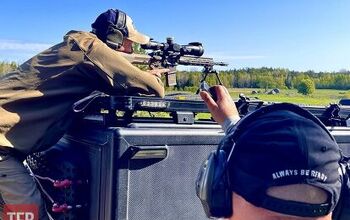
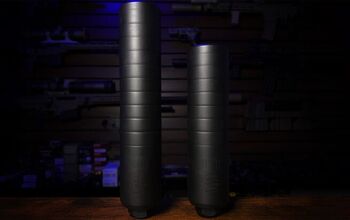
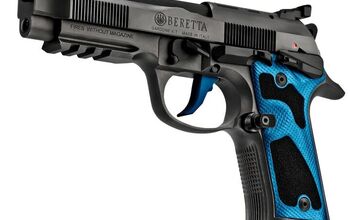




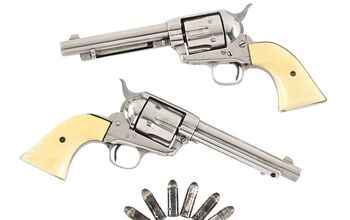
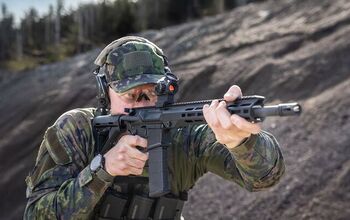

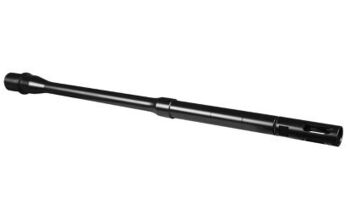


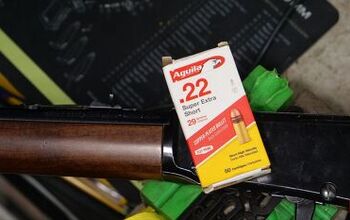


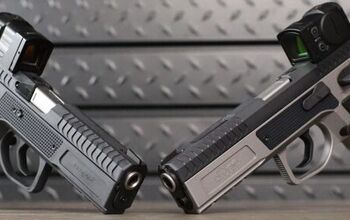
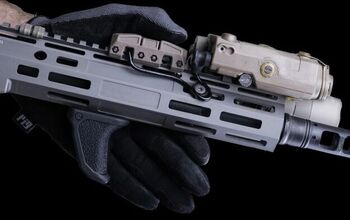
Comments
Join the conversation